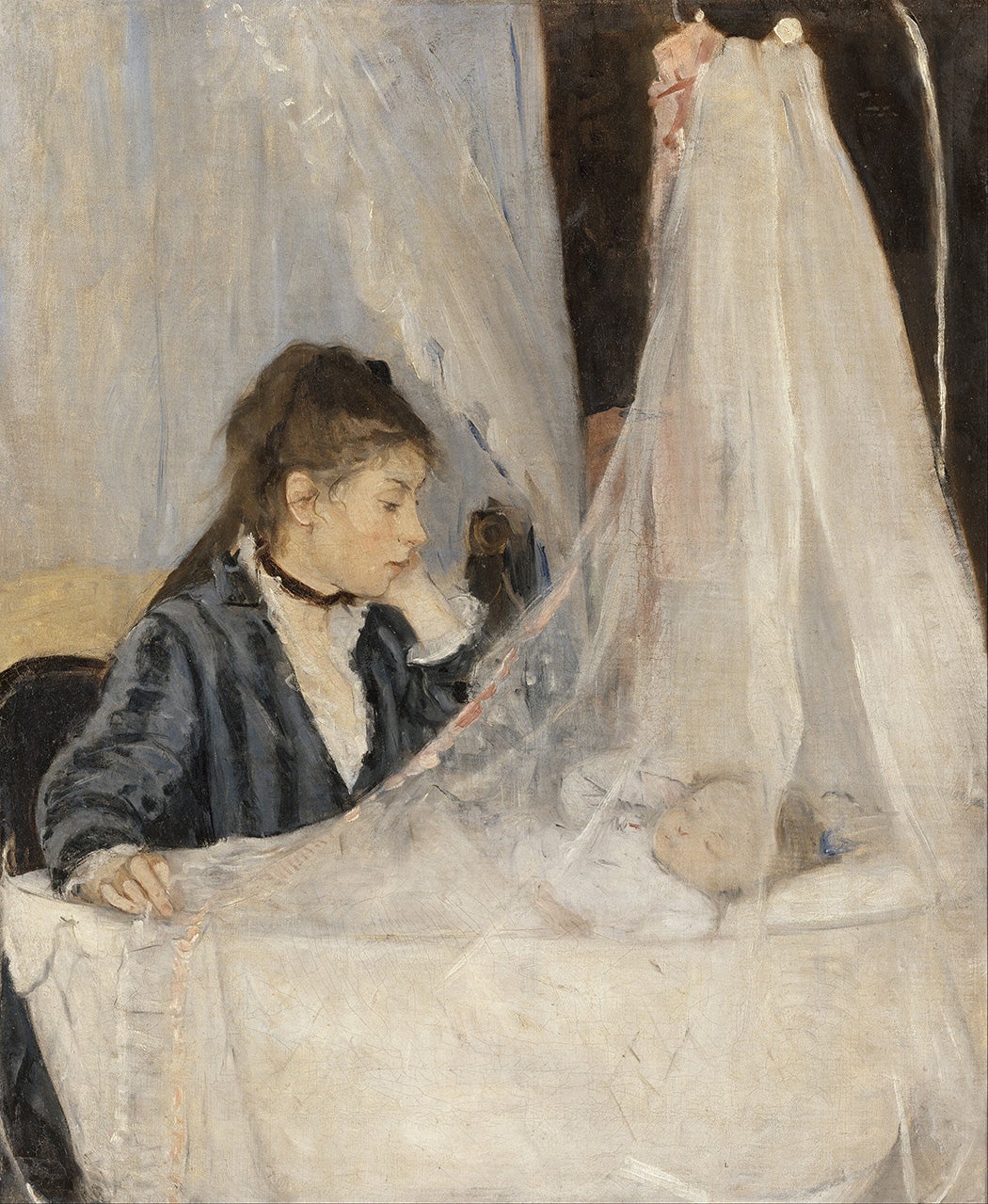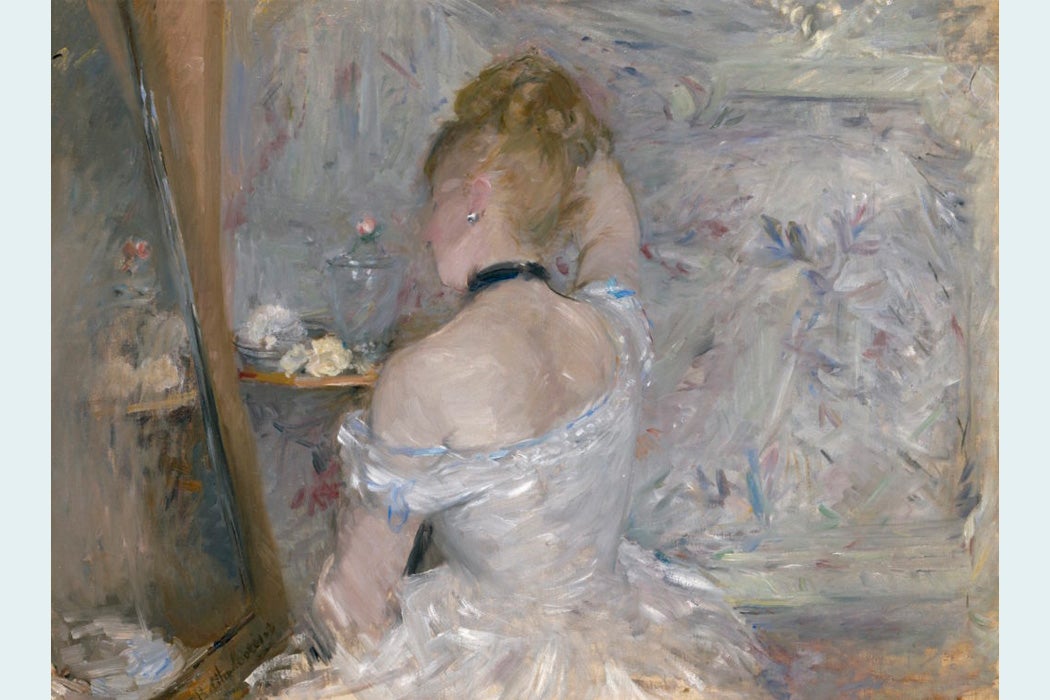During her years as an active member of the Impressionist movement, French artist Berthe Morisot painted women almost exclusively. In loose, rapid brush strokes, she portrayed women at all stages of life, from childhood and adolescence, to pregnancy and motherhood.
Unlike many of her male contemporaries, Morisot never objectified her subjects or idealized these scenes. In one of her most famous works, “The Cradle” (1872), her sister Edma regards her baby daughter, her expression full of love, but also fatigue. It was part of a series of paintings of Edma, who trained as an artist alongside Berthe before giving it up when she married.
“Here, the female self is the prevailing theme as Berthe leads us through Edma’s progression from newlywed, to pregnant woman, to mother,” writes art historian Marni Reva Kessler in Woman’s Art Journal. Often the paintings reflected the sisters’ close bond. In “Portrait of Madame Pontillon” (1871), Edma looks right at the viewer, situating us in the intimate place of Morisot. She is dressed in a voluminous black dress that hides her pregnancy, which is revealed to us by the positioning of her hands above her stomach. “Defying the long-standing tradition of woman serving, as Virginia Woolf has put it, ‘as looking-glasses possessing the magic and delicious power of reflecting the figure of man at twice its natural size,’ these images refer not to the gaze of a male or female other but directly to Morisot herself,” Kessler notes.
Despite her distinctive and radical style, however, Morisot is not as well-known as male Impressionists like Claude Monet, Édouard Manet, Auguste Renoir, and Edgar Degas. Part of that obscurity is due to the shadow of Manet, whose brother Eugène she married in 1874. Unlike Edma, however, she did not stop painting when she became a wife, and in fact Eugène stepped away from his own art to support Berthe (he is one of the few men she painted). Furthermore, a number of her works are in private collections, and poor reproductions that degraded the nuances and texture of the paintings have hurt her reputation.

The traveling exhibition Berthe Morisot, Woman Impressionist is celebrating her important place in art history. Organized by the Musée national des beaux-arts du Québec, the Barnes Foundation in Philadelphia, the Dallas Museum of Art, and the Musée d’Orsay in Paris, it recently opened at its third stop in Dallas. Many of the paintings depict Morisot’s family or friends in the Passy area of Paris where she lived from the 1850s to 1895. There she captured aspects of women’s domestic lives and work infrequently seen on canvas. “The Wet Nurse and Julie” (1879) shows her own daughter being cared for by another woman, whose labor in turn gave Morisot time to create this painting.
“Instead of Baudelaire’s ‘ebb and flow’ of the life of the boulevards, Morisot represented the ebb and flow of other kinds of lives, the lives of women and children in the suburbs,” writes art historian Kathleen Adler in Oxford Art Journal. “Her paintings indicate the temporality of immediate experience, the continuous flow of day-to-day life.”
Once a Week
Viewers can sense that flow in the dashed lines of the paintings, appearing unfinished and spontaneously formed, pushing the idea of making an “impression” of everyday life. This fluidity of pigment revealed the working process of the artist, and all the small decisions and brush strokes which contributed to the immortalizing of a moment.
Morisot died of pneumonia in 1895 at the age of 54. Defying the expectations for a woman in the nineteenth century to devote herself only to being a mother and wife, Morisot remained an artist. She used those experiences as the subjects for her work, and presented a female perspective on them that had been rarely seen in art. In Woman’s Art Journal, art historian Christine Havice cites an 1881 letter in which Morisot wrote: “the love of art … or simply the love, the habit of any work, does not diminish with the years. It is this that reconciles us to our wrinkles and white hair.”







